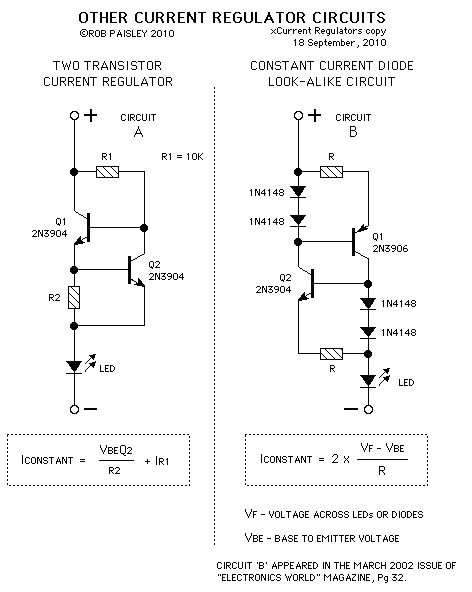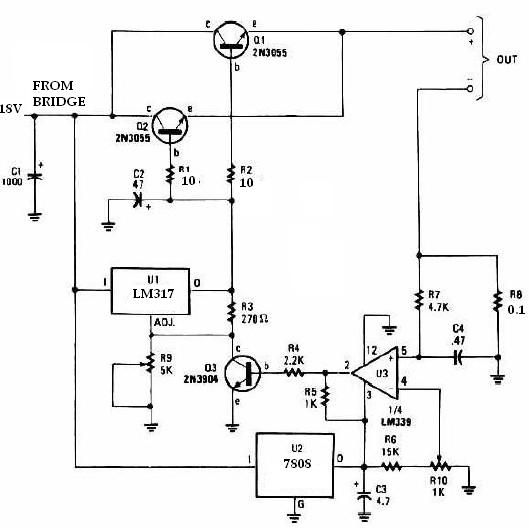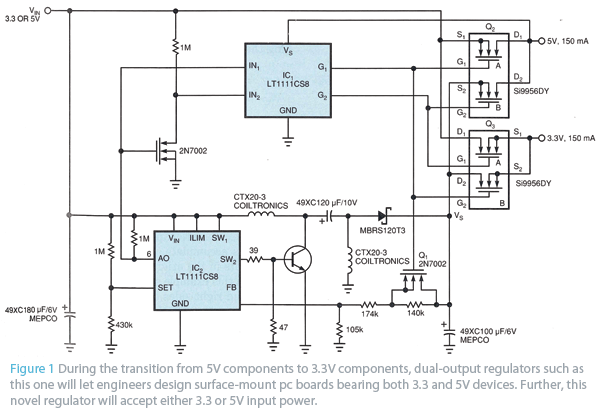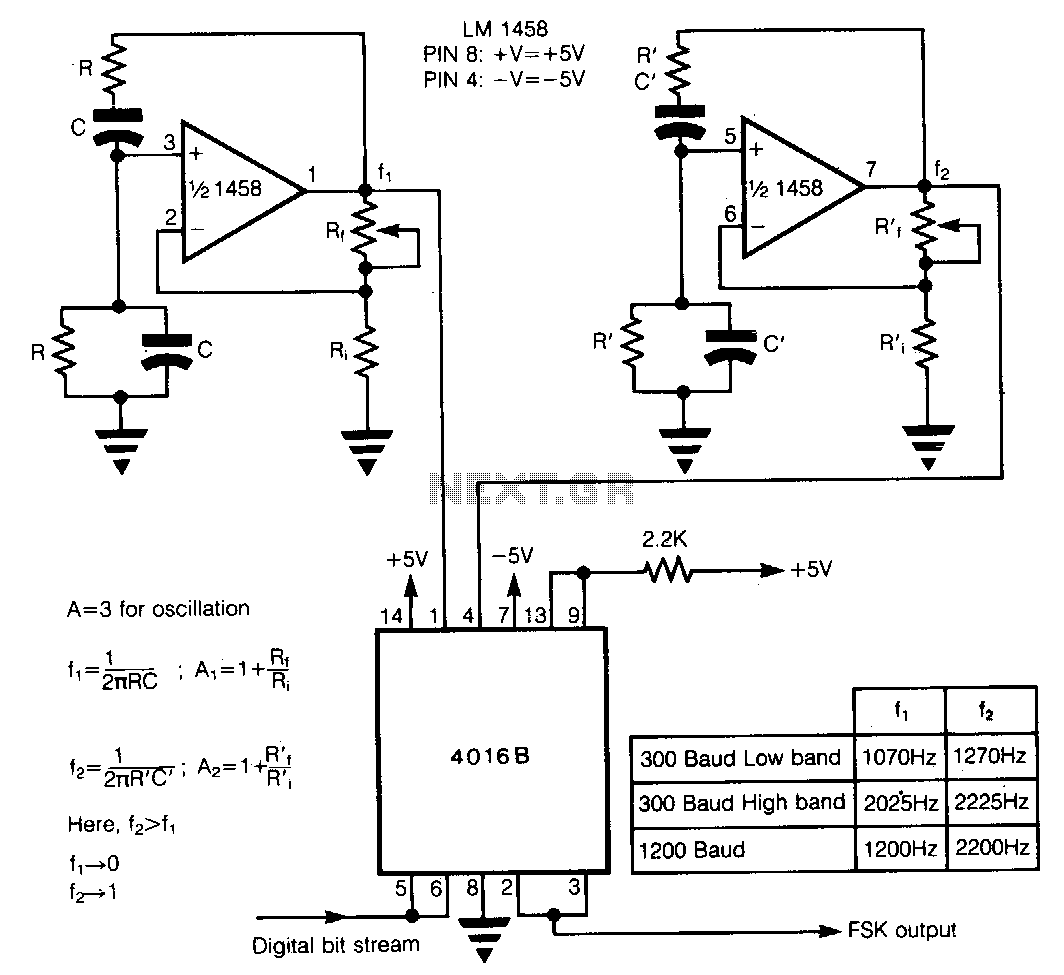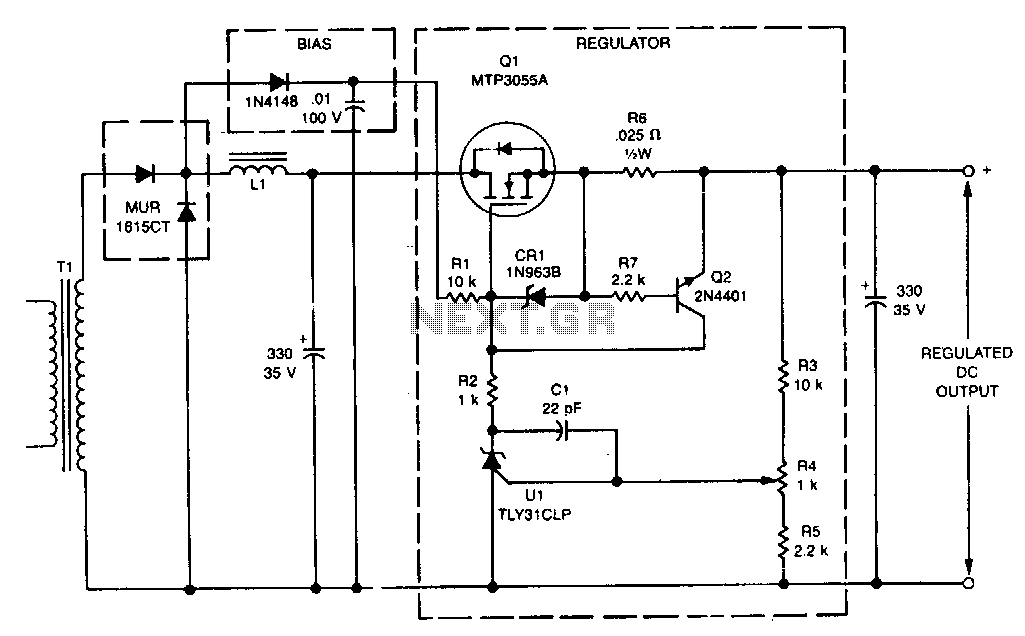
LM317 Low-Cost 3A Switching Regulator
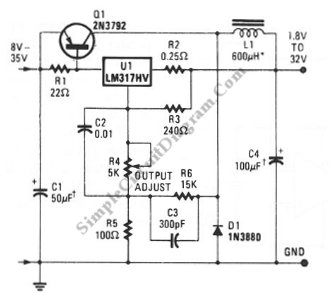
A switching voltage regulator circuit depicted in the schematic diagram can serve as a cost-effective solution for high-efficiency electronic circuit requirements.
The switching voltage regulator circuit operates by converting a higher input voltage to a lower output voltage with minimal energy loss, making it suitable for applications where efficiency is crucial. The core components typically include an inductor, a switch (usually a transistor), a diode, and output capacitors.
In the circuit, the switch alternates between the on and off states, controlling the energy transferred to the inductor. When the switch is closed, current flows through the inductor, storing energy in the form of a magnetic field. When the switch opens, the inductor releases its stored energy through the diode to the output load. This process allows for efficient voltage regulation and minimizes heat generation compared to linear regulators.
The output voltage can be adjusted using feedback mechanisms that monitor the output voltage and compare it to a reference voltage. This feedback loop ensures that the output voltage remains stable despite variations in load current or input voltage. Additional components such as capacitors at the input and output help filter voltage ripples, ensuring a smooth and stable output.
Overall, this switching voltage regulator circuit is ideal for applications requiring efficient power management, such as battery-operated devices, power supplies for microcontrollers, and other electronic systems where space and energy efficiency are paramount.A switching voltage regulator circuit shown in the schematic diagram here can be a low cost solution for your high efficiency requirement electronic circuit.. 🔗 External reference
The switching voltage regulator circuit operates by converting a higher input voltage to a lower output voltage with minimal energy loss, making it suitable for applications where efficiency is crucial. The core components typically include an inductor, a switch (usually a transistor), a diode, and output capacitors.
In the circuit, the switch alternates between the on and off states, controlling the energy transferred to the inductor. When the switch is closed, current flows through the inductor, storing energy in the form of a magnetic field. When the switch opens, the inductor releases its stored energy through the diode to the output load. This process allows for efficient voltage regulation and minimizes heat generation compared to linear regulators.
The output voltage can be adjusted using feedback mechanisms that monitor the output voltage and compare it to a reference voltage. This feedback loop ensures that the output voltage remains stable despite variations in load current or input voltage. Additional components such as capacitors at the input and output help filter voltage ripples, ensuring a smooth and stable output.
Overall, this switching voltage regulator circuit is ideal for applications requiring efficient power management, such as battery-operated devices, power supplies for microcontrollers, and other electronic systems where space and energy efficiency are paramount.A switching voltage regulator circuit shown in the schematic diagram here can be a low cost solution for your high efficiency requirement electronic circuit.. 🔗 External reference
